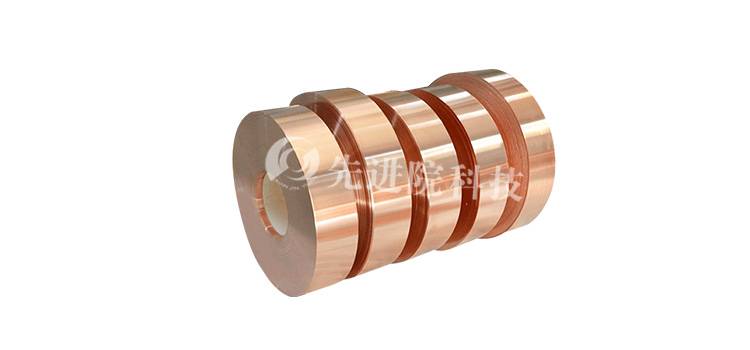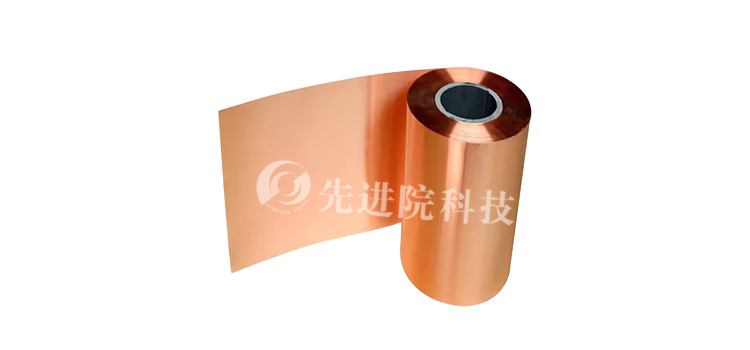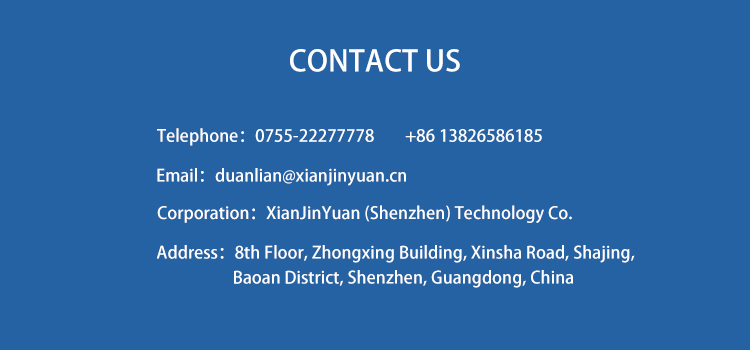

Hotline:0755-22277778
Tel:0755-22277778
Mobile:13826586185(Mr.Duan)
Fax:0755-22277776
E-mail:duanlian@xianjinyuan.cn
Composite copper foil is a negative electrode current collector material with a "sandwich structure", in which the base film is usually PET or PP film with a thickness of 4.5 μ m. Copper layers of 1 μ m are plated on both sides of the base film.
1. The safety concerns of electrolytic copper foil for lithium batteries;
Electrolytic copper foilAs a key basic material for the negative electrode of lithium batteries, it is the carrier of the negative electrode active material, as well as the collector and conductor of negative electrode electrons in lithium batteries. Due to its excellent conductivity, flexibility, and mechanical processing properties, as well as low processing costs and mature technology, copper foil is the preferred material for lithium battery negative electrode material carriers and current collectors. In the production process of lithium batteries, the negative electrode active material is uniformly mixed with about 90% negative electrode active material carbon material, 4% -5% acetylene black conductive agent, and 6% -7% binder and coated on the surface of copper foil current collector. After drying, rolling, cutting and other processes, the negative electrode can be produced. The performance of copper foil has a great impact on the performance of lithium batteries.
According to the research progress on the mechanism of thermal runaway induced by internal short circuit in lithium batteries for electric vehicles, the main abuse conditions that cause thermal runaway of batteries are electrical abuse (overcharging, overdischarging), mechanical abuse (collision, compression, puncture, vibration), and thermal abuse (diaphragm disintegration at high temperatures). The three abuse conditions are almost always accompanied by internal short circuit caused by direct contact between positive and negative electrode materials, which leads to thermal runaway. Therefore, internal short circuit of batteries is an important link in thermal runaway of batteries. The biggest concern for consumers regarding lithium batteries is their safety, and battery self ignition is caused by internal short circuits due to uncontrolled heating. traditionElectrolytic copper foilFor pure copper, it carries granular active materials, and the electrolyte has fluidity. In the installation of power batteries, it needs to deal with different complex road conditions, causing stress concentration at a certain point under bumps, alternately and repeatedly producing small cracks, which later develop into fractures. The surface fracture of the film will produce burrs, which pose a risk of penetrating the diaphragm and causing internal short circuits.

2. The benefits of composite current collector PET/PP copper foil plating
(1)PP-PET composite copper foilImproved safety, weakened the factors affecting the puncture diaphragm, and reduced the risk of short circuit inside the battery. One of the causes of internal short circuit is the generation of burrs due to fatigue fracture of metal thin films under stress concentration. PP-PET composite copper foil not only improves battery safety, but also reduces the weight of the current collector due to its low density. PP-PET
Composite copper foil has good compatibility and can match existing battery systems. Composite copper foil is a copper polymer copper composite structure, which is a new type of copper foil material with polymer as the substrate and copper plating on both sides. Select polymer materials such as PET and PP as the substrate. Organic polymer materials have insulation and flexibility, which can meet the winding requirements of foil materials. The internal substrate of plastic composite copper foil is made of polymer material, which has excellent fatigue resistance and can absorb some stress, weaken the effect of metal film fracture and lithium dendrites on membrane puncture. Magnetron Sputtering: Magnetron sputtering is a type of physical vapor deposition, in which electrons collide with argon gas under the action of an electric field, and high-energy argon atoms ionize and collide with the surface of the target material, causing sputtering of the target material.
Sputtering particles deposit on the substrate to form a thin film. Vacuum evaporation: Vacuum evaporation is a type of physical vapor deposition, which uses a certain heating and evaporation method to vaporize the coating material under vacuum conditions, and particles deposit and condense on the surface of the substrate to form a film. Water electroplating: Water electroplating is a traditional electroplating process. After magnetron sputtering, PET/PP and other substrates deposit a thin metal layer on the surface of the substrate. Metal deposition is achieved on both sides of the sputtered metal layer PET substrate sputtered metal layer composite material through electrochemical means, increasing the thickness of the metal layer and reducing resistance.
(2) Plastic composite copper foil not only improves battery safety, but also reduces the weight of the current collector due to its low density
1. It is divided into one-step method (chemical deposition method/vacuum magnetron sputtering method/vacuum evaporation method), two-step method (vacuum magnetron sputtering water electroplating), and three-step method (vacuum magnetron sputtering vacuum evaporation water electroplating). The one-step sputtering plating method has a higher cost and the three-step deposition efficiency is higher, but the yield is lower. Therefore, currently mainstream manufacturers use the two-step method.
2. Two step method: first, magnetron sputtering a copper layer on PET/PP, and then electroplating with water to thicken it. This method can meet technical indicators such as spotting, perforation, and ductility. Among them, the second major process is ion exchange, which has technical similarities with traditional electroplating methods and is relatively mature in technology.PVD sputtering coatingThis has become a current technical challenge and a core obstacle to the commercialization of PET copper foil.
3. Industry pain points:
(1) There are several major challenges in the current process that prevent large-scale production:
1) Poor adhesion of the film layer after film formation;
2) The deformation, bulging, perforation, and even fracture of the base film caused during the coating process;
3) The uniformity of the film layer and the difficulty in controlling spot stains after film formation;
4) Impurities accumulated inside the coating chamber due to coating;
5) To achieve low resistance, increasing the film thickness leads to carbonization of the base film and a decrease in ductility.
(2) Economic indicators: The speed, continuity, and downtime of PVD sputtering coating process have a significant impact on costs. If the cost is too high, it will be difficult to meet the cost reduction requirements of downstream battery manufacturers. If speed, continuity, and downtime can all be guaranteed in the future, it is possible to reduce costs.

Advanced Institute (Shenzhen) Technology Co., Ltd, © two thousand and twenty-onewww.avanzado.cn. All rights reservedGuangdong ICP No. 2021051947-1 © two thousand and twenty-onewww.xianjinyuan.cn. All rights reservedGuangdong ICP No. 2021051947-2